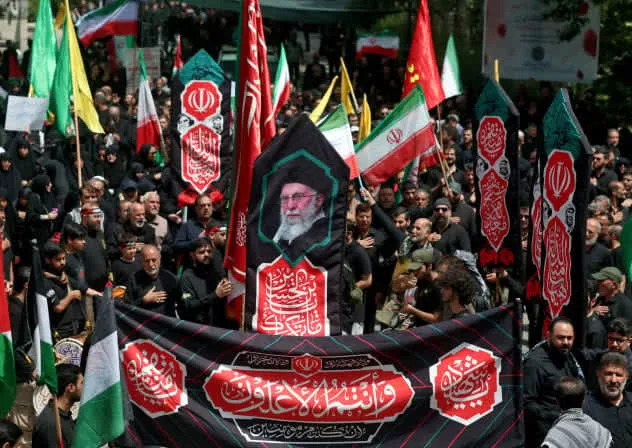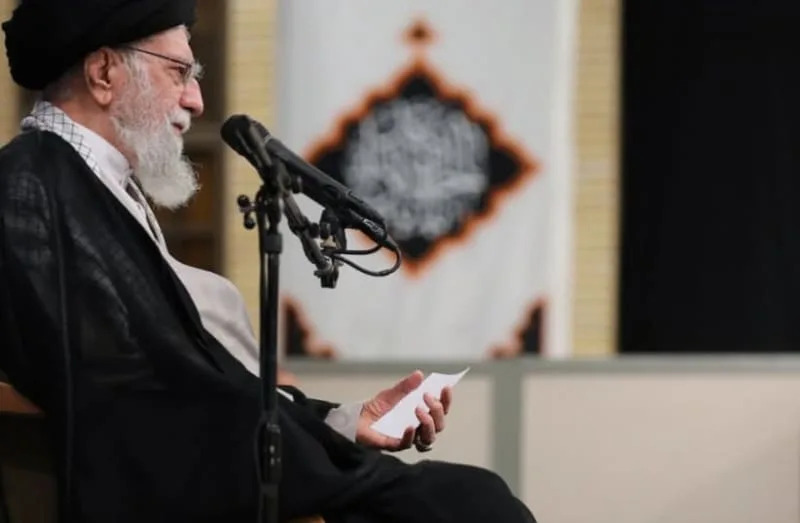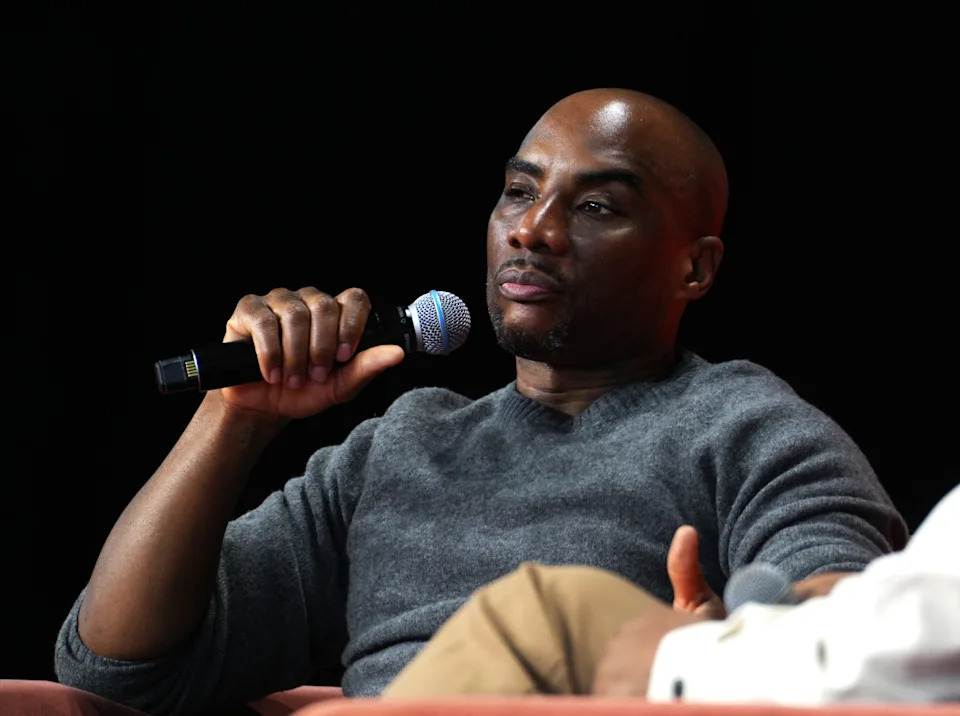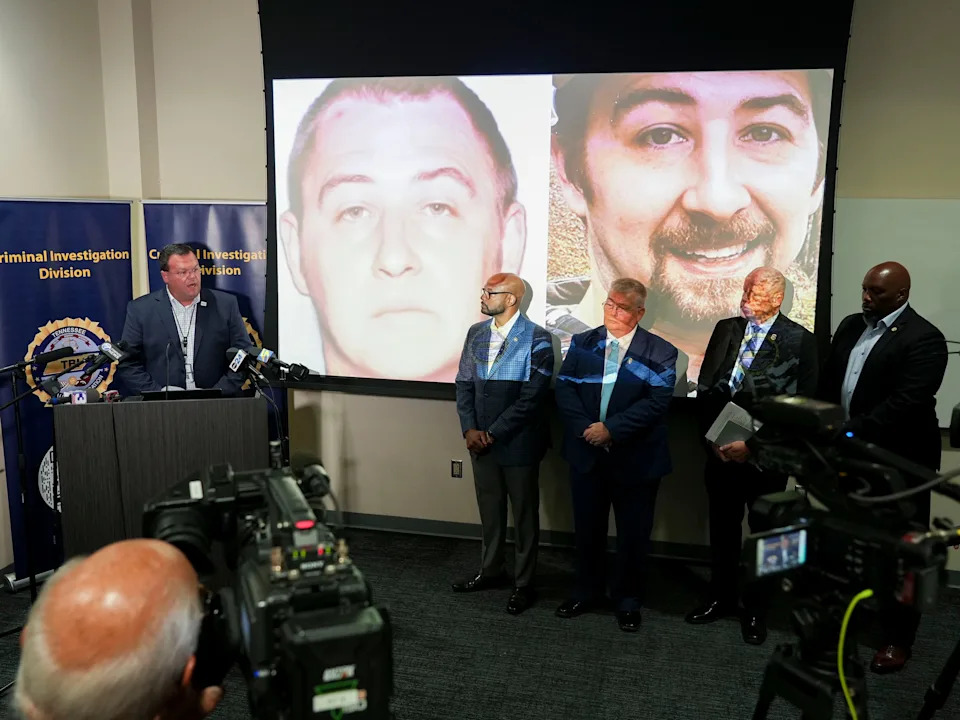
One month after Israeli strikes cripple Iranian air defenses, Khamenei turns to old playbook with new power center.
It took just 12 days in June for Iran’s sprawling military machine to be exposed, but the Islamic Republic is now rebuilding its shattered pride.
On Saturday, Iranian media affiliated with the Islamic Revolutionary Guard Corps (IRGC) confirmed that President Masoud Pezeshkian will chair a newly revived defense council, a top-tier military body that has not operated in any meaningful way since the Iran-Iraq War in the 1980s. Its resurrection appears to be a desperate response to the devastating Israeli air campaign that briefly seized control of Iranian airspace in mid-June.
“The Defense Council is back,” proclaimed Tasnim News, often seen as a mouthpiece for the IRGC, framing it as part of broader “structural reforms” within Iran’s Supreme National Security Council (SNSC).
Behind the dry constitutional language lies the reality that Iran’s supreme leader and his top commanders are scrambling to reassert control after the Islamic Republic’s defenses were shattered, both militarily and psychologically.
Article 176 of the Iranian constitution permits the SNSC to establish sub-councils such as this one, and Iran has quietly done so before. But never in such a public and symbolic way. The announcement of the new defense council came with a cast list straight from the heart of the regime: the IRGC and army commanders, the parliament speaker, the judiciary chief, the intelligence minister, and representatives of Ayatollah Ali Khamenei himself. All are now reporting to a single wartime command.

Fars News hinted at a pending shake-up at the very top. Longtime regime insider Ali Larijani is expected to replace R.-Adm. Ali Akbar Ahmadian as SNSC secretary. That position, often the nerve center of Iran’s foreign and military strategy, would place Larijani, a seasoned conservative and confidant of Khamenei, at the helm of this new defense coordination push.
According to Mansour Haghighatpour, a former lawmaker close to Larijani, the council will move the Armed Forces General Staff into a supporting, rather than commanding, role. “If we face serious conflict,” Haghighatpour said, “command must have a designated deputy, ensuring we are not caught off guard at critical moments.”
Tehran was definitely caught off guard.
While Iranian media framed the move as an efficiency measure, critics abroad see something more urgent: a regime on the defensive, both militarily and politically.
Maj.-Gen. Abdolrahim Mousavi, Iran’s top military officer, has held multiple public meetings in recent weeks, warning of further Israeli or American action. He stressed the need for short, medium, and long-term preparedness plans and demanded that civilian infrastructure adopt a military-style readiness doctrine.
In comments that veered toward existential alarm, Mousavi declared last week that Tehran “must ward off any new act of aggression,” adding that Iran’s military response would be “immediate and powerful.”
At the same time, a new national plan for civil defense training and shelter preparedness has been approved within Iran, Mousavi announced on Saturday.
“The new directive defines the responsibilities of executive bodies in building and managing shelters and emergency housing,” he said.
“Today, within the armed forces, we are pursuing different preparedness programs across three time frames – short-term, medium-term, and long-term,” Mousavi said. “Improving readiness in the civilian sector and securing infrastructure must also be addressed with this same approach.”
Behind the slogans and the missile barrages, Tehran’s new structure may signal something else: a fundamental shift in civil-military relations.
By placing the president at the head of this revived body, under the watchful eye of Khamenei and flanked by IRGC loyalists, the regime may be inching closer to a centralized wartime model, with little distinction between civilian and military spheres.
Israel-Iran tensions to intensify again?
Many have predicted that tensions between Israel and Iran will once again flare up in the coming months. Iranian Foreign Minister Abbas Araghchi said over the weekend that Iran could still strike Israel despite the blows the republic took in June. Araghchi claimed that there was no established ceasefire between Tehran and Jerusalem, in an interview with the Iranian Student News Agency.
“The aggression has stopped, and in turn our right to defend has stopped,” Araghchi said. “That’s it. There is no ceasefire agreement; there is nothing else. They stopped the aggression without any conditions, and we stopped the defense. When there is no aggression, naturally, there is no reason to defend ourselves. So, since they asked for the attacks to stop without any conditions, we accepted.”
However, he said, “Everything can resume. They can resume, we can resume. There is no official ceasefire, and everything is possible, and it is not just Iran that should be worried and concerned.”
The last time Iran activated the defense council was during the bloodiest years of the Iran-Iraq War. That conflict gave birth to the rise of the IRGC, to martyrdom culture, and to the Islamic Republic’s siege mentality. The new war with Israel has reawakened all three.
Reviving the defense council should signal to Israel and the United States that the Islamic Republic is preparing for more war, more coordination, and more control from the top.
Whether that leads to renewed resilience or deeper cracks will depend on whether Tehran has learned from June’s humiliation, or simply rearranged the rubble.






Comments